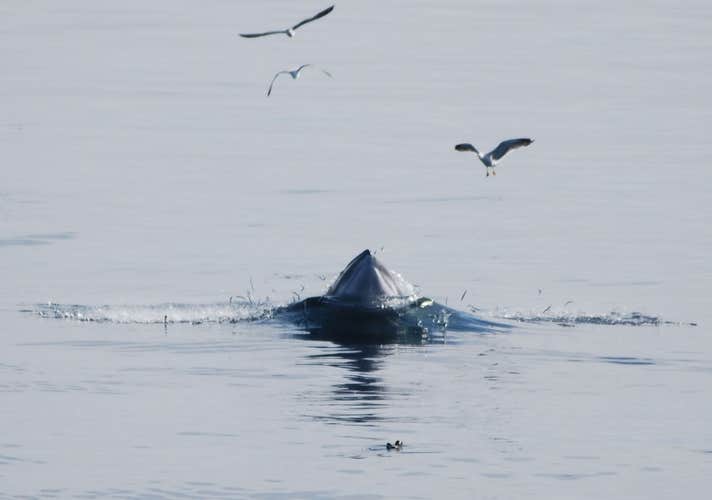Description
Summary
Description
Come along on this fantastic combination tour of nature and culture where you spend the afternoon watching the wealth of marine life in Faxaflói Bay and visit the tiny island of Viðey in the evening to get an insight into the artwork of Yoko Ono at the Imagine Peace Tower.
At Reykjavík's Old Harbour, you'll board a boat to sail the seas of Faxaflói Bay, where Minke whales, dolphins, porpoises and Humpback whales are a frequent visitors. You'll be provided with warm overalls and a blanket so that you can stand out on the deck, trying to spot the first of these magnificent creatures.
You could also have a seat in the indoor lounge with a warm cup of hot chocolate and enjoy the commentary and views ahead. Onboard, you will learn all about the wildlife and marine mammals of the Icelandic waters, as well as the areas surrounding the bay.
After the excursion, you will have some free time to dine or shop before heading out again for the next leg of the combination tour. Back at the Old Harbour, you will meet your guides and crew who will and take you onboard another boat where you can watch a screening of the official introduction video to the Imagine Peace Tower narrated by Yoko Ono herself.
The Imagine Peace Tower is situated on the nearby island of Viðey, and it only takes several minutes to get there by boat. The tour takes you into the mysterious and wonderful world of calm and serenity.
Walk over to Yoko Ono's Imagine Peace Tower and get acquainted with the artwork and the history of the piece and why this particular island of this specific country was chosen to host this pillar of light. The light from the tower can be seen from anywhere within the Reykjavík city on a dark evening, but it is best explored up close.
Under the right conditions, the Northern Lights can even be spotted! Your guide can help you set up your camera gear if you are interested in photographing the vast starry sky, the Peace Tower or Northern Lights.
Immerse yourself in art, history, culture and nature on this fantastic tour. Check availability by choosing a date.













